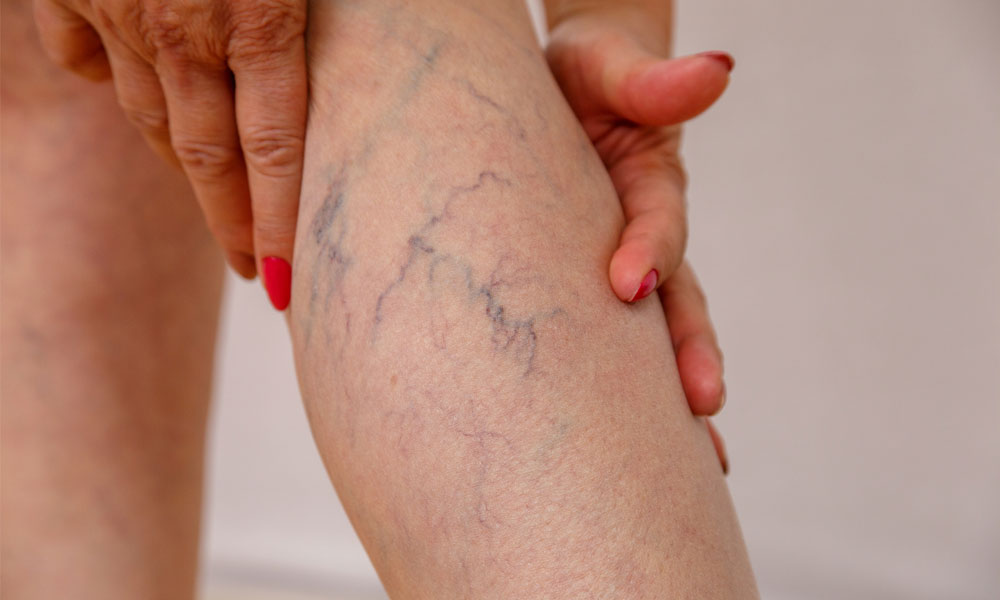Sclerotherapy is a minimally invasive medical technique that is used to treat thread and spider veins.
It involves injecting a solution, known as a sclerosant, directly into the affected areas. This solution essentially irritates the vein lining, causing it to swell and stick together. Over time, veins collapse and fade and eventually disappear, leading to a significant improvement in the appearance of the skin.
What are Thread Veins?
Thread veins, also known as telangiectasias, are tiny blood vessels that appear near the surface of the skin. They can create fine web-like patterns and are most commonly found on the face, thighs, and calves. Thread veins can be caused by various factors, including genetics, ageing, hormonal changes, sun exposure and certain medical conditions.
What are Spider Veins?
Also called varicose veins, these are similar to thread veins but are larger and more noticeable. They typically have a bluish or reddish colour and can bulge or twist beneath the skin. Spider veins mostly occur on the legs and are often formed by prolonged standing or sitting.
The Sclerotherapy Procedure
During a sclerotherapy session, a healthcare professional will use a fine needle to inject the sclerosant solution into the affected veins. The number of injections required depends on the extent and location of the veins being treated. The procedure is usually performed in an outpatient setting and does not require anaesthesia.
Before undergoing sclerotherapy, it’s important to consult with a healthcare provider who specializes in vein treatments. They will evaluate your medical history, assess your veins and provide specific instructions for preparation. Common preparation guidelines include avoiding certain medications, not applying certain lotions or creams to the skin on the day of treatment and wearing loose-fitting clothing to the appointment.
A fine needle will be used to inject the sclerosant solution into the targeted veins. After each injection, pressure may be applied to prevent blood from flowing back into the vein. The process continues until all the identified veins have been treated.
You will be advised to wear compression stockings or bandages to apply pressure to the treated areas. This helps to promote healing and prevent blood from re-entering the treated veins.
The Benefits of Sclerotherapy
Sclerotherapy offers several benefits for individuals seeking to improve the appearance of thread and spider veins. These include:
- It is a non-surgical procedure, which means it doesn’t require incisions or general anaesthesia.
- Most people can resume their daily activities immediately after treatment, although strenuous exercise should be avoided for a short period.
- Sclerotherapy has a high success rate in reducing the appearance of thread and spider veins.
- By diminishing the visibility of these veins, it can help individuals feel more confident about their appearance.
While sclerotherapy is generally considered safe, like any medical procedure, it carries some risks and potential side effects. These can include temporary bruising, redness, or swelling at the injection sites, mild discomfort or cramping, temporary darkening of the skin, and, in some rare circumstances, the formation of small ulcers.
Serious complications are rare but may include allergic reactions, blood clot formation, or inflammation.
Sclerotherapy is a highly effective treatment for thread and spider veins, offering a non-surgical solution to improve their appearance. With its high success rate and minimal downtime, it has become a good choice for many individuals with this type of problem.

